DEMÄNOVSKÁ CAVE OF LIBERTY
Located on the northern side of the Low Tatras in the Demänovská Valley between Liptovský Mikuláš and the well-known skiing resort Jasná, the cave stands out by its unbelievable variety of colours and shapes of flowstone fills, unique calcite water lilies and other lacustrine forms of flowstone decoration. |
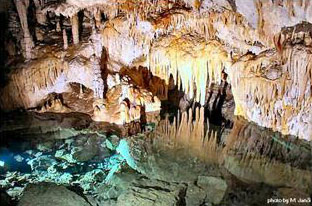 |
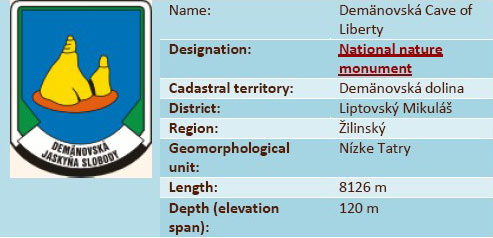 |
|
CAVE LOCATION It is located on the right side of the Demänovská Valley and the northern side of the Low Tatras Mts., in the national natural park Demänovská Valley and in the territory of the Low Tatras National Park. The cave entrance is in the Točište Valley at 870 m above sea level.
The cave is located 13 km south from the city of Liptovský Mikuláš, in the Low Tatras Mts., on the east side of the Demänovská Valley, several kilometers below the known skiing resort Jasná. The serpent path from the parking place to the cave is 400 m long with an elevation span of 67m. The ascent to the cave takes 10 to 15 min and serves as an educational trail at the same time.
The traditional tour is 1,150 m long with a vertical span of 86 m. There are 913 steps on the path. The exclusive (long) tour is 2,150 m long and the same elevation span and 1,118 steps. The length of the traditional tour is 60 min, and the exclusive tour 100 min. The average cave temperature ranges between 6,1 and 7°C. MAP OF THE CAVE The length of the path that is open to the public is 1,800 m. the vertical difference between the entrance and the ground Floor is -66 m, and between the Ground Floor and exit is +85 m. |
 |
HISTORY AND PRESENT
|
 The building of the entrance |
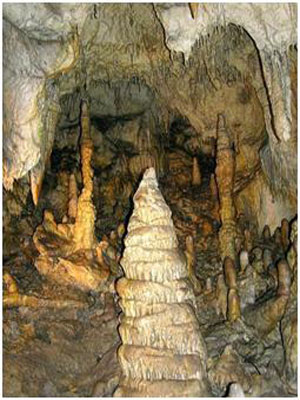 |
 |
NATURAL SETTINGS The cave represents morphologically the most varied part of the Demänovský Cave System. It was formed in the Middle Triassic dark-gray Gutenstein limestone of the Krížna Nappe along the tectonic faults by the ancient ponor flow of Demänovká and its side hanging ponor tributaries. The length is 8,126 m with elevation distance of 120 m. |
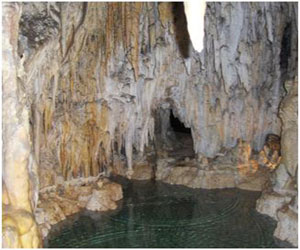 |
 |
The lower oval, river modeled passages of the cave, represents four horizontal development levels (Marble Riverbed, Loamy Passage, Dry Passage, Ground Floor, Král's Gallery). They are in places widened by collapses (Great and Spouting Dome, Pink Hall, Hell Dome). Steeply descending passages lead into cave levels in hanging positions, mostly from the place of present cave entrance and exit. Except for the smaller oval passages (Passage of Suffering, Virgin Passage, Bear's Passage, Treasury) they include also bigger spaces (Sphere Dome, Parachute Abyss, Jánožík's Dome, Hviezdoslav's Dome, Deep Dome). The Miraculous Halls, Magical Passage and Stone Vineyard have a fissure character. From among the flowstone fills, the water lilies and other lacustrine forms (sponge, coral, grapes forms) and also eccentric stalactites are unique. Mighty flowstone waterfalls and columns, sphaerolitic stalactites and many other forms of stalactites and stalagmites are captivating. A thick layer of white soft sinter - moonmilk can be found in the Great Dome. The underground water course of Demänovká, which springs in the non-karst territory under the main ridge of the Low Tatras, flows through the cave. It sinks underground in Lúčky and springs again through the Vyvieranie Cave northerly from the Demänovská Cave of Liberty. The Great Lake is 52 m long, 5 to 12 m wide and more than 7 m deep. Air temperature ranges from 6.1 to 7°C, and the relative humidity from 94 to 99 %. The bones of a cave bear (Ursus spelaeus) were found in the Bear's Passage (Medvedia chodba). The finding of the palpigrade Eukoenenia spelaea , one of the most northern occurrences of this arachnids in the world, ranks the cave among the biospeleological localities of European importance. From among the tiny invertebrates, mostly the multipede Allorhiscosoma sphinx (endemite of the middle Slovakian caves) and amphipods Synurella intermedia a Niphargus tatrensis are important. |
A FEW PHOTOS: |
|
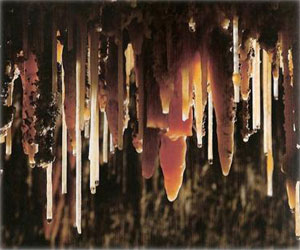 Decoration details in the Pink Hall |
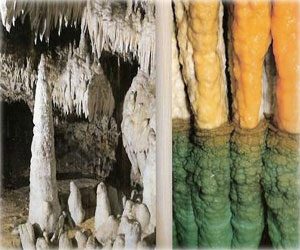 Decoration details in the snow dome |
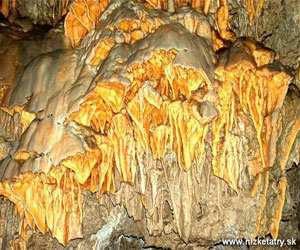 Flowstone decoration Polypores |
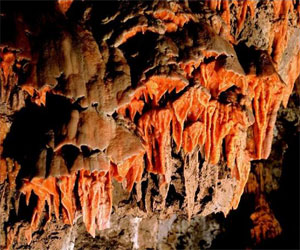 Decoration details in the Crossroads |